1mg
Showing 5451–5500 of 7910 results
-
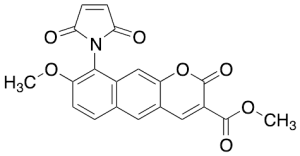
Methyl 9-maleinimido-8-methoxy-6,7-benzocoumarin-3-carboxylate
$571.84 Add to cart View Product DetailsMolecular Formula : C20H13NO7
-

Methyl a-L-Arabinopyranoside-13C
$336.38 Add to cart View Product DetailsMolecular Formula : C5 13C H12 O5
-
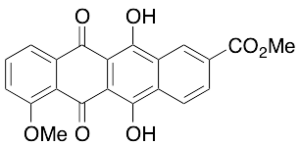
Methyl Bis-anhydro-Daunomycinone Carboxylate
$122.48 Add to cart View Product DetailsMolecular Formula : C21H14O7
-
Methyl Hydroxyethyl Piperazinyl Methyl Pyrimidinylamino Thiazolecarboxylate
$176.81 Add to cart View Product DetailsMolecular Formula : C16H22N6O3S
-
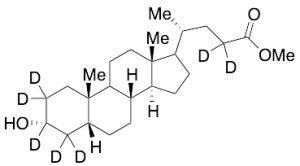
Methyl Lithocholate-d7
$166.46 Add to cart View Product DetailsMolecular Formula : C25 D7 H35 O3
-
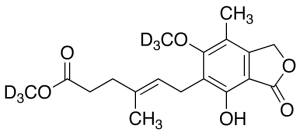
Methyl Mycophenolate-d6 (EP Impurity E)
$192.34 Add to cart View Product DetailsMolecular Formula : C18H16D6O6
-
Methyl N-[4,6-diamino-2-(1H-pyrazolo[3,4-b]pyridin-3-yl)-5-pyrimidinyl]-N-methylcarbamate
$86.25 Add to cart View Product DetailsMolecular Formula : C13H14N8O2
-
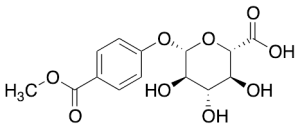
Methyl Paraben Beta-D-Glucuronide
$196.65 Add to cart View Product DetailsMolecular Formula : C14H16O9
-
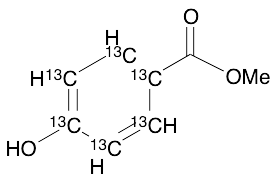
Methyl Paraben-13C6
$243.23 Add to cart View Product DetailsMolecular Formula : C213C6H8O3
-

Methyl Pyrophosphate Sodium Salt (~90%)
$176.81 Add to cart View Product DetailsMolecular Formula : CH6O7P2 . x(Na)
-
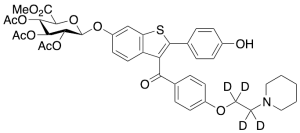
Methyl Raloxifene-d4 6-(2,3,4-Tri-O-acetyl-Beta-D-glycopyranuronate)
$258.75 Add to cart View Product DetailsMolecular Formula : C41H39D4NO13S
-

Methyl Stearidonate
$254.44 Add to cart View Product DetailsMolecular Formula : C19 H30 O2
-

Methyl-1-naphthalenemethylamine-D₃
$111.26 Add to cart View Product DetailsMolecular Formula : C12H10D3N
-
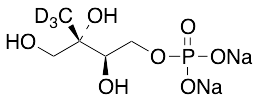
Methyl-D-erythritol-d3 Phosphate Disodium Salt
$264.79 Add to cart View Product DetailsMolecular Formula : C5 D3 H8 Na2 O7 P
-

Methyldienolone
$220.80 Add to cart View Product DetailsMolecular Formula : C19 H26 O2
-
Methylene-Bis Paroxetine Dihydrochloride
$132.83 Add to cart View Product DetailsMolecular Formula : C39H42Cl2F2N2O6
-
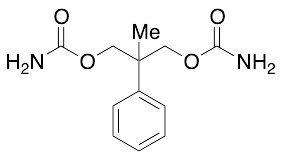
Methylfelbamate
$53.48 Add to cart View Product DetailsMolecular Formula : C12H16N2O4
-

Methylone Hydrochloride
$60.38 Add to cart View Product DetailsMolecular Formula : C11 H13 N O3 . Cl H
-

Methylone-d3 Hydrochloride
$162.15 Add to cart View Product DetailsMolecular Formula : C11 2H3 H10 N O3 . Cl H
-
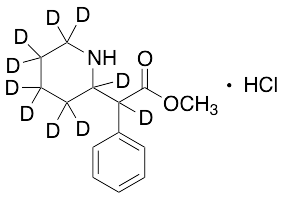
Methylphenidate-d10 (Major) Hydrochloride
$248.40 Add to cart View Product DetailsMolecular Formula : C14H10D10ClNO2
-
Metolachlor ESA-d6 Sodium Salt
$421.76 Add to cart View Product DetailsMolecular Formula : C15H16D6NNaO5S
-
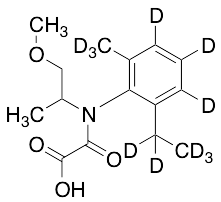
Metolachlor OA-d11
$239.78 Add to cart View Product DetailsMolecular Formula : C15H10D11NO4
-
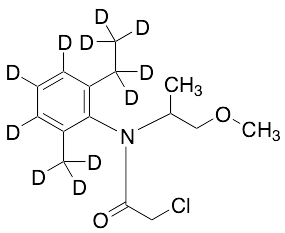
Metolachlor-d11
$440.74 Add to cart View Product DetailsMolecular Formula : C15H11D11ClNO2
-
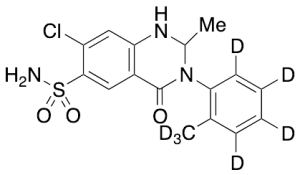
Metolazone-d7
$224.25 Add to cart View Product DetailsMolecular Formula : C16H9D7ClN3O3S
-

Metonitazene
$75.90 Add to cart View Product DetailsMolecular Formula : C21 H26 N4 O3
-

Metopimazine-d6
$213.04 Add to cart View Product DetailsMolecular Formula : C22H21D6N3O3S2
-

Metoprolol Acid-d5 (>90%)
$224.25 Add to cart View Product DetailsMolecular Formula : C14H16D5NO4
-

Metoprolol-D7 Hydrochloride
$107.81 Add to cart View Product DetailsMolecular Formula : C15 D7 H18 N O3 . Cl H
-
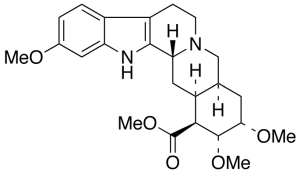
Metoserpate
$157.84 Add to cart View Product DetailsMolecular Formula : C24 H32 N2 O5
-

Metoxuron-d6 (N,N-dimethyl-d6)
$74.18 Add to cart View Product DetailsMolecular Formula : No Data Available
-

Metribolone
$194.06 Add to cart View Product DetailsMolecular Formula : C19 H24 O2
-
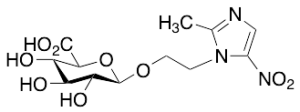
Metronidazole Beta-D-Glucuronide
$213.04 Add to cart View Product DetailsMolecular Formula : C12 H17 N3 O9
-

Metronidazole-d4
$235.46 Add to cart View Product DetailsMolecular Formula : C6 2H4 H5 N3 O3
-
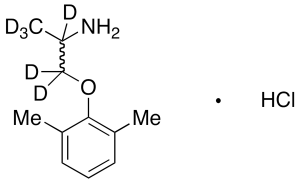
Mexiletine-d6 Hydrochloride
$225.11 Add to cart View Product DetailsMolecular Formula : C11H12D6ClNO
-
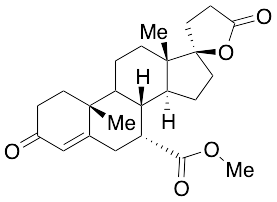
Mexrenone
$214.76 Add to cart View Product DetailsMolecular Formula : C24 H32 O5
-

MG 132
$50.89 Add to cart View Product DetailsMolecular Formula : C26H41N3O5
-

Mibolerone
$100.91 Add to cart View Product DetailsMolecular Formula : C20 H30 O2
-
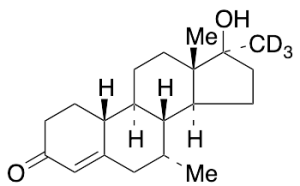
Mibolerone-d3
$232.01 Add to cart View Product DetailsMolecular Formula : C20H27D3O2
-
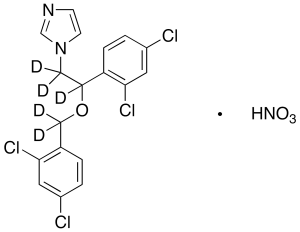
Miconazole-d5 Nitrate (Major)
$244.09 Add to cart View Product DetailsMolecular Formula : C18H9D5Cl4N2O • HNO3
-
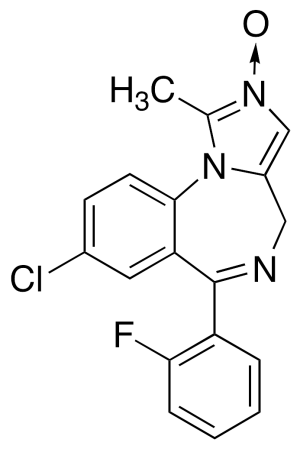
Midazolam 2-Oxide
$76.76 Add to cart View Product DetailsMolecular Formula : C18 H13 Cl F N3 O
-
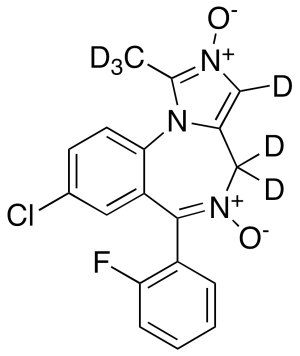
Midazolam 2,5-Dioxide-d6
$166.46 Add to cart View Product DetailsMolecular Formula : C18H7D6ClFN3O2
-
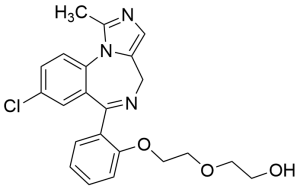
Midazolam Diglycol ether
$86.25 Add to cart View Product DetailsMolecular Formula : C22 H22 Cl N3 O3
-
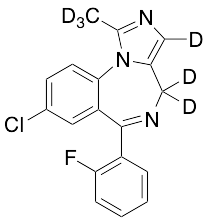
Midazolam-d6
$289.80 Add to cart View Product DetailsMolecular Formula : C18D6H7ClFN3
-
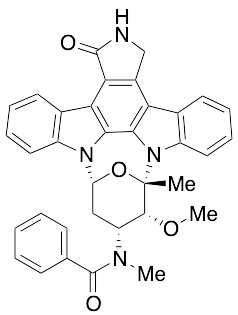
Midostaurin
$56.06 Add to cart View Product DetailsMolecular Formula : C35 H30 N4 O4
-
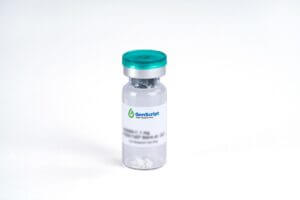
MIF, Human
$1,177.31 Add to cart View Product DetailsMacrophage Migration Inhibitory Factor (MIF) is a pleiotropic cytokine, existing as a homotrimer in vivo. MIF was originally identified as a T cell derived factor responsible for the inhibition of macrophage migration. However, recently MIF has received much more attention because of its possible roles in angiogenesis and cancer development. MIF is over-expressed in various cancers, including pancreatic, breast, colon, brain, prostate, skin, and lung. The intratumoral expression of MIF is strongly correlated with angiogenic growth factor expression, such as the expression of Interleukin 8 (IL-8) and Vascular Endothelial Growth Factor (VEGF), and with risk of recurrence after resection.
-

MIF, Mouse
$2,518.50 Add to cart View Product DetailsMacrophage migration inhibitory factor (MIF or MMIF), also named as glycosylation-inhibiting factor (GIF), L-dopachrome isomerase, or phenylpyruvate tautomerase, is a protein encoded by the MIF gene. It is released from white blood cells by bacterial antigen stimulation to trigger an acute immune response, or by glucocorticoids to counter-act the inhibitory effects of glucocorticoids on immune system. MIF is a homotrimer of which each subunit contains 115 amino acids. As mentioned above, MIF is involved in the innate immune response to bacterial pathogens and counter-acts the anti-inflammatory activity of glucocorticoids. Furthermore, it also plays a role as mediator in regulating the function of macrophages in host defense and has phenylpyruvate tautomerase and dopachrome tautomerase activity in vitro. Mouse MIF is active on human cells, while human MIF is active on mouse cells. Mouse MIF is 99 %, 84 %, 90 %, and 90 % a.a. identical to rat, porcine, bovine and human MIF, respectively.
-
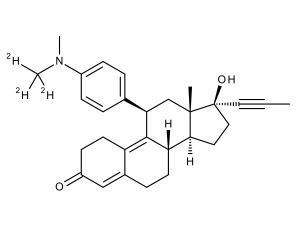
Mifepristone-D3
$257.03 Add to cart View Product DetailsMolecular Formula : C29 D3 H32 N O2
-

MIG/CXCL9, Human
$2,018.25 Add to cart View Product DetailsChemokine (C-X-C motif) ligand 9 (CXCL9), also known as monokine induced by interferon gamma (MIG), is a small cytokine belonging to the CXC chemokine family. The CXCL9 gene is induced in macrophages and in primary glial cells of the central nervous system specifically in response to IFNγ. CXCL9 has been shown to be a chemoattractant for activated T-lymphocytes and TIL but not for neutrophils or monocytes. The human CXCL9 cDNA encodes a 125 amino acid residue precursor protein with a 22 amino acid residue signal peptide that is cleaved to yield a 103 amino acid residue mature protein. CXCL9 has an extended carboxy-terminus containing greater than 50% basic amino acid residues and is larger than most other chemokines. A chemokine receptor (CXCR3) specific for CXCL9 and IP-10 has recently been cloned and shown to be highly expressed in IL-2-activated T-lymphocytes.
-
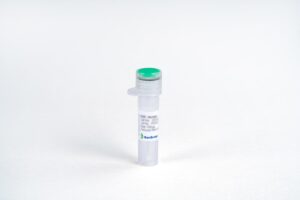
MIG/CXCL9, Mouse
$1,323.94 Add to cart View Product DetailsChemokine (C-X-C motif) ligand 9 (CXCL9), also known as monokine induced by interferon gamma (MIG), is a small cytokine belonging to the CXC chemokine family.The CXCL9 gene is induced in macrophages and in primary glialcells of the central nervous systemin response to IFNγ. CXCL9 has been shown to be achemo attractant for activated Th1lymphocytes and tumor-infiltrating leukocytes (TILs) but not for neutrophils or monocytes. CXCL is also involved in other cellular activities including inhibition of tumor growth, angiogenesis, and inhibition of colony formation of hematopoietic progenitors. CXCL9 is closely related to two other CXC chemokines, CXCL10 and CXCL11.CXCL9, CXCL10 and CXCL11 all elicit their chemotactic functions by interacting with the chemokine receptor CXCR3.
-

Mildronate-d3
$239.78 Add to cart View Product DetailsMolecular Formula : C6H11D3N2O2






